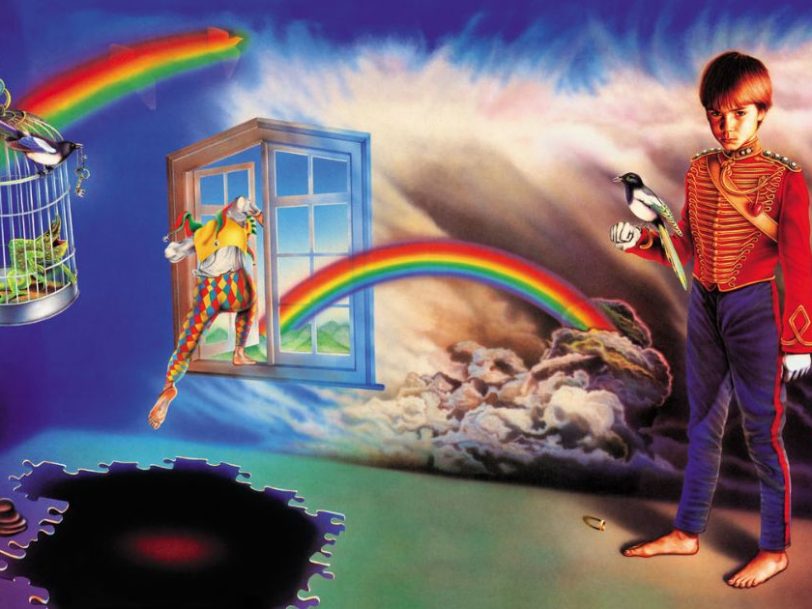Long considered to be a captivating and kaleidoscopic masterpiece, Marillion’s third album, Misplaced Childhood, was a towering achievement that turned the band into the biggest prog-rock act of the 80s. Entrancing listeners with a tale of lost love and a disillusioned soul bathing in the fading glow of childhood memories, it saw singer-songwriter Fish pair his delirious stream-of-consciousness lyricism with Steve Rothery’s spellbinding guitar riffs to produce the group’s most vivid and evocative work to date.
Listen to ‘Misplaced Childhood’ here.
After cooking up the concept behind Misplaced Childhood during a ten-hour acid trip, Fish and the rest of the band relocated to Hansa Tonstudio, in West Berlin, in late 1984, to record the album with Rolling Stones producer Chris Kimsey. Though the sessions were undeniably productive, it’s a miracle the group made it out alive, with Fish’s wayward antics leading him on one occasion to strip off his clothes in Hitler’s favourite restaurant, and to throw bricks over the Berlin Wall in the hope of setting off landmines. Little did he realise that the resulting album would be just as explosive.
“The Wogan show lit the touchpaper on the whole thing”
Described by Fish as “a way of saying sorry” to an old flame called Kay, the album’s incendiary lead single, Kayleigh, was released in April 1985, a mesmerising hit-in-waiting full of Mark Kelly’s sizzling 80s synths and Steve Rothery’s blazing guitar arpeggios. After performing the song on Terry Wogan’s BBC One talk show, Wogan, in May 1985, Kayleigh set fire to the charts and asserted itself as one of the best Marillion songs. “The Wogan show was what did it,” Fish later said. “That lit the touchpaper on the whole thing.”




